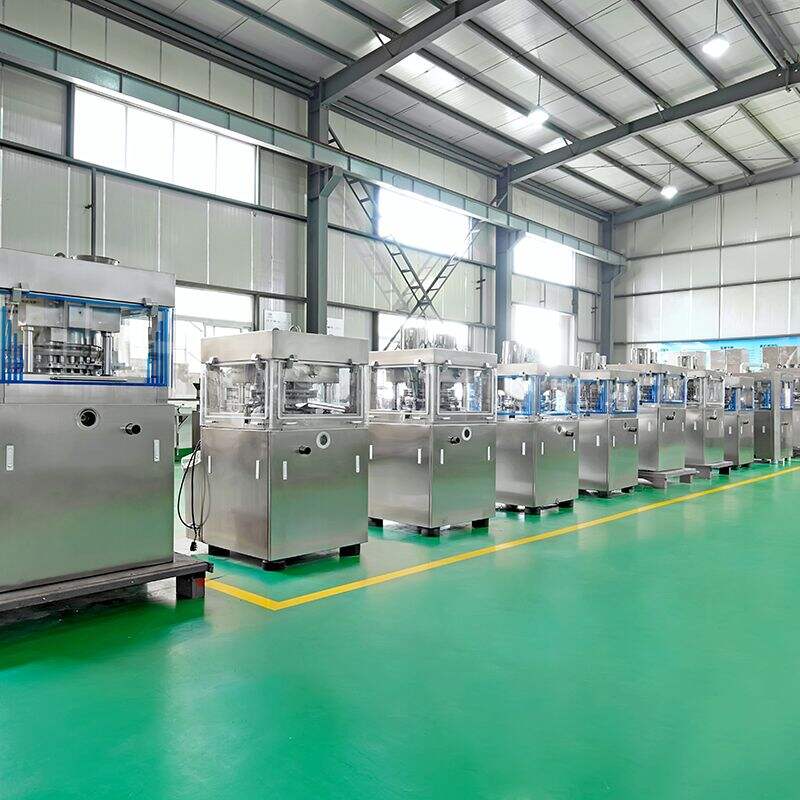From the perspective of structure, the common faults and troubleshooting methods for rotary tablet press are presented as follows:
1. Rotary table
The rotary table of rotary tablet press is a round disc, with each plunger hole and intermediate mold hole evenly distributed around it. As it rotates under the drive of the spindle, each plunger moves up and down along the curved guide rail to complete the tableting process. The rotary table is the main working component of the tablet press. During continuous operation, its common faults are analyzed and troubleshooted as follows.
(1) Due to the long-term wear of the plunger hole or the intermediate mold hole, the coaxiality of the two holes is unsatisfactory. During use, there are different coaxiality between the plunger and intermediate mold holes due to the different degree of wear, which will increase the friction resistance of the plunger moving up and down, even leading to tableting failure. If they are worn not very severely, the coaxiality can be restored by reaming the hole with a reamer. If worn severely, the rotary table should be replaced.
(2) The upward movement of the rotary table will affect fillings or chippings: The upward movement is usually caused by the loosening of the conical lock blocks that fix the rotary table, and can be resolved by tightening the conical lock blocks. If the fastening screws are faulty, they should be replaced immediately.
(3) Loose screws at the top of the intermediate mold will lead to the upward movement of the intermediate mold and the wear of the feeder. The upward movement is mainly caused by loose screws at the top of the intermediate mold, and can be resolved by tightening the screws. The screws at the top of the intermediate mold are vulnerable, and will fail to fasten the intermediate mold after long-term wear, so they should be replaced in time.
2. Guide rail
Guide rail is an important component to make the plunger move along the curve. Most of its failures are caused by insufficient lubrication. Analysis and troubleshooting of common faults:
(1) Guide rail wear: The plunger moves along the curve on the guide rail and operates normally by sliding friction; guide rail wear is one of the common faults in maintenance. The guide rail assembly is composed of upper and lower guide rails. If the plunger and the guide rail are worn slightly, the guide rail can be polished with whetstone and brought back to normal. If they are worn seriously, the guide rail can only be replaced.
(2) Loose guide rail assembly: After continuous operation, the guide rail assembly may become loose and should be tightened in time and transited smoothly.
(3) The bridging plate of the lower guide rail is worn, causing the plunger to wear the guide rail body: the bridging plate of the lower guide rail plays a protection role for the guide rail body. The guide rail can be repaired with whetstone if worn slightly, or replaced if worn seriously.
3. Pressure roll
The pressure roller assembly of rotary tablet press consists of upper pressure roller and lower pressure roller. It is also a device to regulate tablet pressure and strengthen protection. Analysis and troubleshooting of common faults:
(1) Pressure roller wear: The outer ring of the pressure roller is badly worn, resulting in high resistance at the both ends of the plunger, and the pressure roller should be replaced. When the inner hole of the pressure roller and the pressure roller shaft are worn severely, the roller or roller shaft also should be replaced. In addition, the pressure roller shaft may be broken or deformed mainly due to excessive pressure. In most cases, that is caused by over-adjustment due to excessive material pressure, and then it is necessary to replace the pressure roller shaft, adjust the materials, and readjust the pressure.
(2) Insufficient lubrication or damage of pressure roller shaft bearing: Regularly lubricate and maintain the pressure roller shaft bearing, and replace it promptly if damaged.
